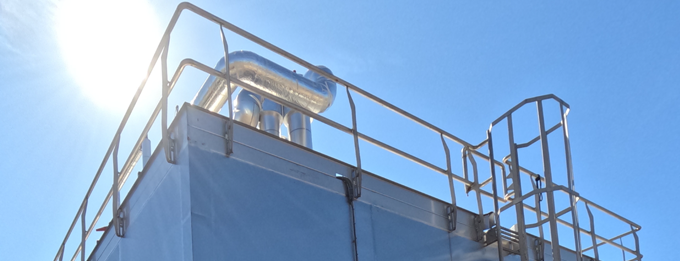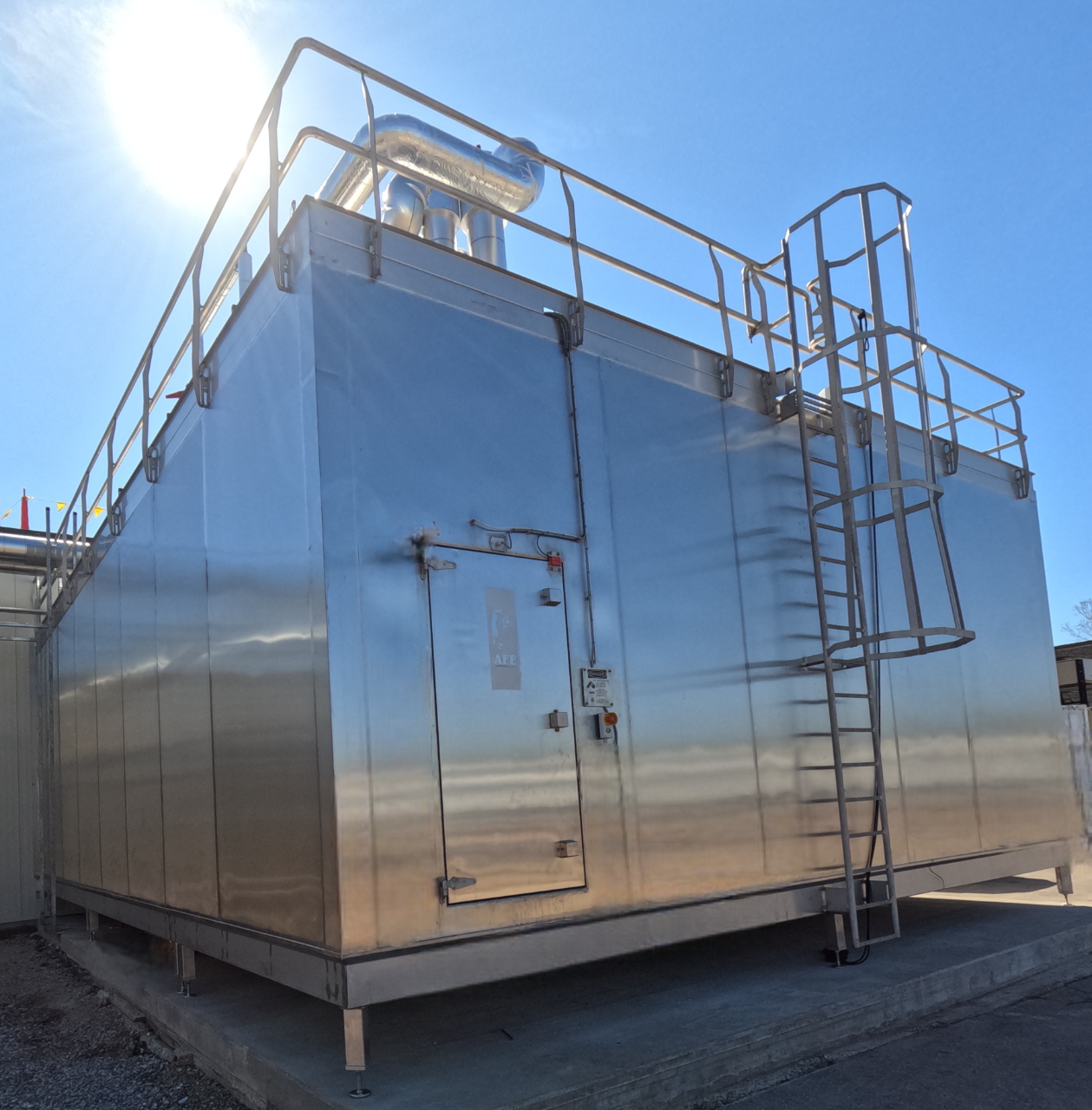
The Future of Frozen Food: 2025
April 21, 2025How Advanced Chilling & Freezing Technologies Are Shaping the Next Generation of Food Processing
Frozen food is no longer just a backup plan hiding in the back of your freezer—it’s now front and center in consumer preferences, supply chain strategy, and food safety innovation. As we step into 2025, the frozen food industry is transforming rapidly, fueled by cutting-edge technology, evolving market demands, and a renewed emphasis on food safety, sustainability, and quality. For food manufacturers who rely on industrial chilling and freezing systems—like tunnel freezers, spiral freezers, and IQF systems—the future looks promising, but only for those ready to innovate.
At AFE, we’ve been at the forefront of this evolution, working closely with food producers to equip them with state-of-the-art chilling and freezing solutions. Here’s a deep dive into where the industry stands now, what’s on the horizon, and how we’re involved in the ongoing process of keeping our clients ahead of the curve.
The Frozen Food Boom: A Quick Look at the Market
Frozen food has come a long way from TV dinners and basic frozen vegetables. Driven by consumer demand for convenience, quality, and longer shelf lives—without sacrificing nutrition—the global frozen food market is expected to surpass $366 billion by 2026, growing at a compound annual growth rate (CAGR) of 5.2%. In North America and Europe, frozen ready meals and protein products are exploding in popularity. Meanwhile, in Asia-Pacific and Latin America, rising urbanization and middle-class expansion are fueling demand for frozen seafood, bakery items, and vegetables.
Key drivers of this growth include:
- Increased focus on food safety and hygiene
- Greater consumer appreciation for minimally processed foods
- Expansion of cold chain logistics
- Accelerated automation and smart-tech integration in food processing plants

Where Technology Meets the Freezer: Major Innovations for 2025
1. Smarter Freezing Systems
In 2025, newer, better smart tech applications are being integrated into freezing control systems to optimize energy usage, monitor performance in real-time, and improve product consistency. Smarter systems can now:
- Adjust airflow dynamically for optimal freezing uniformity
- Detect mechanical inefficiencies or upcoming maintenance issues
- Use predictive analytics to reduce downtime
This is especially relevant for tunnel and spiral freezers that process high volumes and depend on exact temperature control to prevent product damage and microbial growth.
2. Next-Gen IQF Technology
IQF technology is undergoing a mini-revolution in 2025. Traditional IQF systems have proven excellent for freezing small items like peas or shrimp—but newer systems can now handle everything from marinated proteins to plant-based meat alternatives with enhanced fluidization and airflow controls.
Improvements include:
- Enhanced cryogenic freezing integration for delicate or high-fat items
- Precision airflow modulation for better separation and consistency
- Easier-to-clean modular belt designs for faster sanitation cycles
IQF technology is a go-to solution for food companies seeking to meet the growing demand for mix-and-match meal kits, protein toppers, and flash-frozen gourmet ingredients.
3. Sustainability in Freezing: CO2 and Ammonia Systems on the Rise
With regulations tightening around synthetic refrigerants and environmental impact, there’s a strong push toward natural refrigerants like CO₂ and ammonia in chilling and freezing systems. Not only do they offer low global warming potential (GWP), but they also support energy-efficient operations when properly designed.
Advanced Food Equipment is seeing an uptick in hybrid systems that use:
- CO₂ for low-temperature freezing
- Ammonia for high-capacity chilling
These systems reduce environmental footprint without sacrificing performance, which is becoming a competitive advantage for food processors aiming to meet corporate sustainability targets and win over eco-conscious consumers.
4. Automated Clean-in-Place (CIP) and Sanitary Design
Post-pandemic food safety remains top-of-mind for manufacturers and regulators. That’s why many modern spiral, tunnel, and IQF systems now come with automated CIP systems that reduce water usage, speed up cleaning time, and ensure FDA/USDA compliance. We’re proud to say that AFE has always led the way in this area, providing superior high-precision CIP systems for our product line and customers since the emergence of this technology.
In 2025, the standard is:
- Tool-free disassembly
- Drain-friendly base designs
- Hygienic welds and sloped surfaces
- Fully enclosed belt washes
Food safety doesn’t just stop at freezing—it starts there.
5. Modular & Scalable Freezer Design for Startups and Expanding Brands
A major shift happening in 2025 is the democratization of freezing technology. It’s no longer just the big players who get access to high-efficiency freezing. With modular systems, even small to mid-size food producers can scale their operations without major capital expense.
At Advanced Food Equipment, we’ve helped several plant-based protein startups and D2C (direct-to-consumer) frozen meal brands install plug-and-play spiral freezers that grow with their production volume. With the rise of e-commerce grocery delivery and private-label frozen SKUs, scalability is no longer optional—it’s essential.
The Evolving Role of Freezing in Food Strategy
Chilling and freezing are no longer just steps in the process—they are strategic pillars in a food company’s overall brand promise.
- Quality assurance: A better freezer equals a better product. Period.
- Speed to market: Advanced freezing systems shorten lead times and reduce spoilage risk.
- Shelf life extension: Clean-label preservatives? Try ultra-fast freezing instead.
- Global reach: Frozen foods are allowing producers to ship globally with less risk and fewer additives.
As more companies move toward ready-to-eat, grab-and-go, and heat-and-serve solutions, the importance of dependable, flexible, and efficient freezing grows exponentially.
Market Segments to Watch in 2025
Several food categories are poised to become major users of advanced freezing systems this year:
- Plant-Based Proteins: Demand for frozen meat alternatives is surging—especially in nugget, patty, and strip formats that require precise freezing to maintain texture and taste.
- Ethnic and Gourmet Meals: International cuisines and small-batch gourmet meals are growing in popularity through frozen formats—especially for delivery and retail.
- Frozen Desserts & Baked Goods: Innovations in spiral and tunnel freezers have improved handling of high-fat and delicate items like cheesecakes, eclairs, and gluten-free pastries.
- Seafood: IQF technology is advancing traceability and quality retention for seafood processors worldwide.
How AFE Is Leading the Way
At Advanced Food Equipment, we don’t just sell equipment—we engineer success. Our team works side by side with food producers to design, install, and maintain high-performance freezing systems tailored to their needs. Whether you’re upgrading an older system, scaling production, or launching a whole new product line, we bring the experience and innovation to help you future-proof your operations.
Our commitment in 2025:
- Continual investment in energy-efficient and smart tech automation technology
- Expanded support for newer more advanced (and eco-friendly) refrigerant systems
- Modular designs for faster installs and scalable growth
- Uncompromising standards for food safety and hygienic design
Ready for the Cold Front? AFE has What You Need
The future of frozen food in 2025 is all about precision, performance, and possibility. Food producers that embrace advanced chilling and freezing technologies will not only thrive in this new era—they’ll define it.
Whether you’re freezing a thousand pizzas an hour or preparing to launch the next hit protein bowl, the right equipment makes all the difference.
Contact us to help you explore solutions customized for your products, production needs, and growth goals. Let your partners at Advanced Food Equipment LLC. help you build a freezing system that’s not just ready for 2025—but built for the decade ahead. Don’t let the future catch you unprepared!